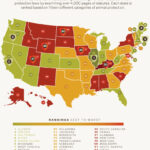Animal cruelty is a multifaceted issue that permeates the fabric of societies across the globe. It manifests in countless forms, from neglect and abandonment to more heinous acts of violence. While the legal framework surrounding animal rights has gradually evolved, fostering a culture that rejects cruelty requires more than just legislation; it necessitates a profound societal shift. To champion this cause, we must engage in social influence tactics that resonate with individuals and communities alike. This article explores various strategies and insights to instigate a transformative change in the culture surrounding animal cruelty.
One potent observation remains evident: cruelty often arises from ignorance or a lack of empathy. As such, education emerges as one of the primary social influence tactics to combat this endemic issue. Through comprehensive awareness campaigns, communities can be enlightened about the impacts of animal cruelty, not only on the animals themselves but also on societal welfare. Informational seminars, workshops, and school programs can serve as channels to disseminate knowledge. These initiatives provide insight into the emotional lives of animals, showcasing their capacity for feelings similar to humans. This emotional connection fosters empathy, compelling individuals to reconsider their behaviors and attitudes towards animals.
Particularly effective are visual aids—photographs and videos—capturing the essence of animals’ suffering. A compelling image can sometimes evoke a greater emotional response than a lengthy exposition. These visuals can be disseminated through social media platforms, amplifying their reach and stirring public discourse. Additionally, the use of narratives that spotlight individual animals can deliver messages more powerfully than abstract statistics. By sharing stories of rescued animals, their physically and emotionally healing journeys evoke feelings of compassion, inspiring individuals to take action.
Moreover, alliances with influential figures, or social proof, can exacerbate the impact of educational efforts. Celebrities or public figures endorsing animal welfare can galvanize their fans, pushing the message into the mainstream consciousness. Their platforms can facilitate conversations about animal rights, urging followers to reflect upon their values. Furthermore, when individuals witness their peers or role models advocating against animal cruelty, they are more likely to conform to socially accepted norms that promote humane treatment of animals. Establishing a community ethos which staunchly opposes cruelty is pivotal in changing the narrative surrounding animal welfare.
However, influencing attitudes through mere awareness might not suffice; one must also engage with the emotional triggers that complicit individuals harbor. Strategies that encapsulate the psychology of persuasion play a critical role here. Understanding the dynamics of fear-based or guilt-laden messaging can be exquisite in certain contexts, yet care must be taken to avoid desensitization. A delicate balance between invoking enough emotional response to inspire action without overwhelming the audience is essential. Campaigns that shift the focus from despair to empowerment—demonstrating how individuals can make a tangible difference—can be particularly effective. By showcasing actionable steps, we can transmute feelings of helplessness into a collective drive for change.
Furthermore, grassroots movements illustrate the power harnessed from community mobilization. Local advocacy groups serve as beacons of hope, creating a network of individuals dedicated to eradicating animal cruelty. These organizations can organize community events such as adoption drives, fundraisers, and volunteer opportunities that facilitate engagement and participation. By fostering a sense of community and shared responsibility, these initiatives cultivate a culture of care that extends beyond the event itself. Observing their peers working together towards a common goal helps solidify anti-cruelty ideals within the community.
In tandem with grassroots movements, policy advocacy is paramount. Engaging with policy-makers through lobbying efforts ensures that the message does not fade amid fluctuating societal interests. Sending petitions, letters, or calls to elected officials reinforces public demand for stronger animal welfare laws. Community engagement through rallies or public demonstrations can also underscore the expectation of legislative change. Persistent advocacy nudges the political landscape, urging lawmakers to recognize animal welfare as a pressing ethical issue that warrants more stringent legal protections.
Moreover, showcasing the economic advantages of supporting animal welfare can be a compelling argument for many individuals and stakeholders. Highlighting the burgeoning market for humane and cruelty-free products invokes a sense of responsibility to the economy, while simultaneously promoting ethical treatment of animals. As businesses pivot towards sustainability, consumers are increasingly inclined to favor companies that exemplify humane practices. This alignment of consumer behavior with ethical treatment offers a dual benefit; it not only reduces animal suffering but also attracts profit-driven entities to consider animal welfare as a vital element of their operations.
Finally, technology plays an indispensable role in reshaping the conversation around animal cruelty. The proliferation of digital platforms enables organizations to reach broader audiences, fostering interactive engagement through campaigns that encourage user-generated content. Social media challenges, sharing personal stories, or even organizing virtual events can create a sense of solidarity and promote activism. When individuals see their friends or family participating in animal welfare campaigns, it not only influences their perspective but also creates a ripple effect within their social circles. The interconnectedness of technology serves as a catalyst—amplifying the collective voice against animal cruelty.
In conclusion, dismantling the culture of animal cruelty necessitates a multifaceted approach underscored by education, community mobilization, and impactful storytelling. By harnessing the power of social influence tactics, society can cultivate a climate imbued with empathy and respect for animal life. Each small change, whether through an individual decision or a collective effort, contributes to a monumental shift in attitudes toward animal welfare. While the challenges ahead are significant, the combined efforts of compassionate individuals and communities can carve a path toward a future devoid of cruelty.









